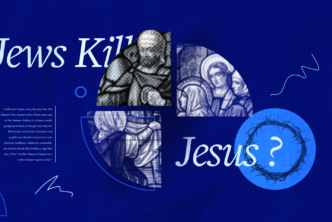Hebrews 10:4 asserts, “It is impossible for the blood of bulls and goats to take away sins,” but Leviticus seems to tell a different story. Even casually reading the book, we notice that Israelites who bring proper sacrifices “shall be forgiven” (e.g., Lev 4:20, 26, 31, 35; 5:10, 13, 16, 18). Have we reached an impasse?
Rather than labeling this a contradiction, we might examine our own perceptions of Old Testament sacrifices—specifically, the sin offering. “Sin offering” is a translation of the Hebrew term chattaʾt (חַטָּאת, open Bible Word study in Logos ), which has the basic meaning of “to miss the mark” or “to fall short.” In using a traditional, familiar rendering, many English Bible translations cause us to misunderstand this sacrifice.
The Goal of the Sin Offering
The label “sin offering” (open Factbook report in Logos) assumes that the goal of this sacrifice was forgiveness for moral failures or violations—sins as we think of them. Leviticus reveals this is not the case. The sin offering was used in cases where people suffered from a bodily discharge (Lev 15), at the dedication of a new altar (Lev 8), or when a Nazirite completes a vow of abstinence (Lev 12).
The real goal of the sin offering was ritual purification. It was designed to guard sacred space—territory sanctified by God’s presence—from infection by impurity. By definition, every person or object “falls short” of divine perfection and must therefore be ritually marked as acceptable for holy ground. The sin offering—better rendered as “purification offering”—was therefore applied to people and inanimate objects to mark them as acceptable before God. These people (and objects) were not unacceptable because they had done evil, but because they were imperfect—they “fell short” of the holy perfection that God’s presence required. The ritual reinforced the idea of the complete otherness of God.
Depending on the individual’s status in the community—whether priest or commoner—the blood of the offering was either used outside or inside the sanctuary. When the sin offering was for a priest, the blood was brought inside the sanctuary. This signified the priest’s undeserved, but now acceptable access to the holy ground of the sanctuary area. On the Day of Atonement (Lev 16), the blood of the sin offering was brought before the mercy seat (the golden cover for the ark or the covenant) within the holy of holies—not because the high priest had committed worse sins than anyone else, but because he needed closer access to the divine presence on that day. The sin offering was about purification for access to God.
What About Forgiveness?
But if the sin offering of the Old Testament didn’t purge people of moral guilt, what about the “forgiven” language? And what happened when people did evil?
The verb translated “forgive” (סלח, salach) essentially means “to be positively disposed toward.” In the context of purification, God now approves of the person or object entering his presence. While the verb may be used elsewhere to address moral guilt (e.g., Psa 25:11), when it comes to the Levitical sacrifice itself, the point was not absolution, but acceptability for entering God’s presence.
Intentional violations of the moral law of God fell into two broad categories and were dealt with accordingly: those for which there was no remedy, resulting in capital punishment, and those for which restitution was required. For the latter, Old Testament law called for reparations to victims to restore the offender.
In this context, the words of Hebrews 10:4 are right on target. Old Testament sacrifices could not provide release from spiritual and moral guilt. They merely allowed people to participate in a temporary and ultimately inadequate system while teaching them about God’s nature. Only Jesus’ greater sacrifice could solve the real problem of our moral guilt before a holy God.

This article is excerpted from Dr. Heiser’s book I Dare You Not to Bore Me with the Bible.
Get free Bible software from Logos!
Compare translations, take notes and highlight, consult devotionals and commentaries, look up Greek and Hebrew words, and much more—all with the help of intuitive, interactive tools.






